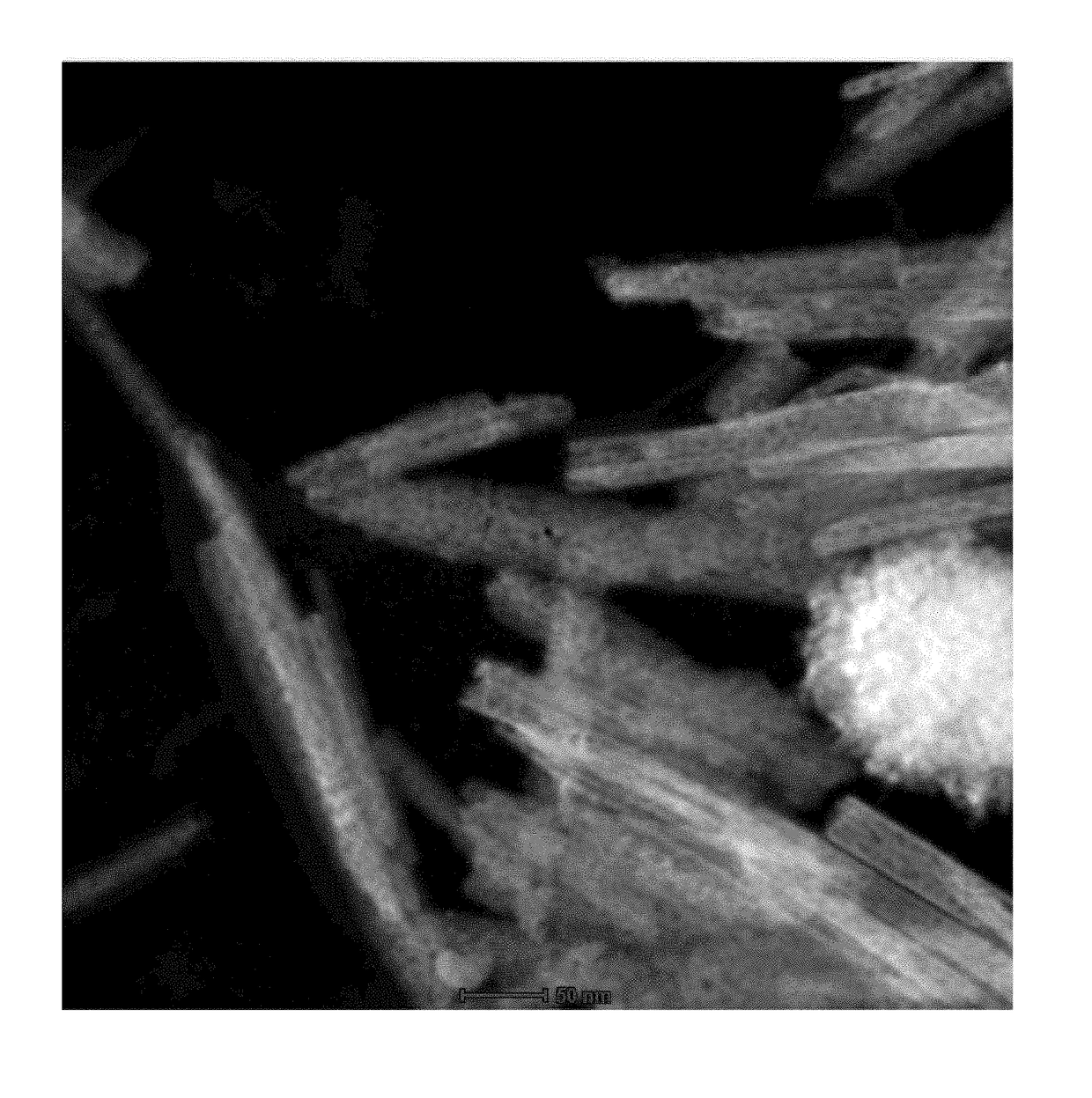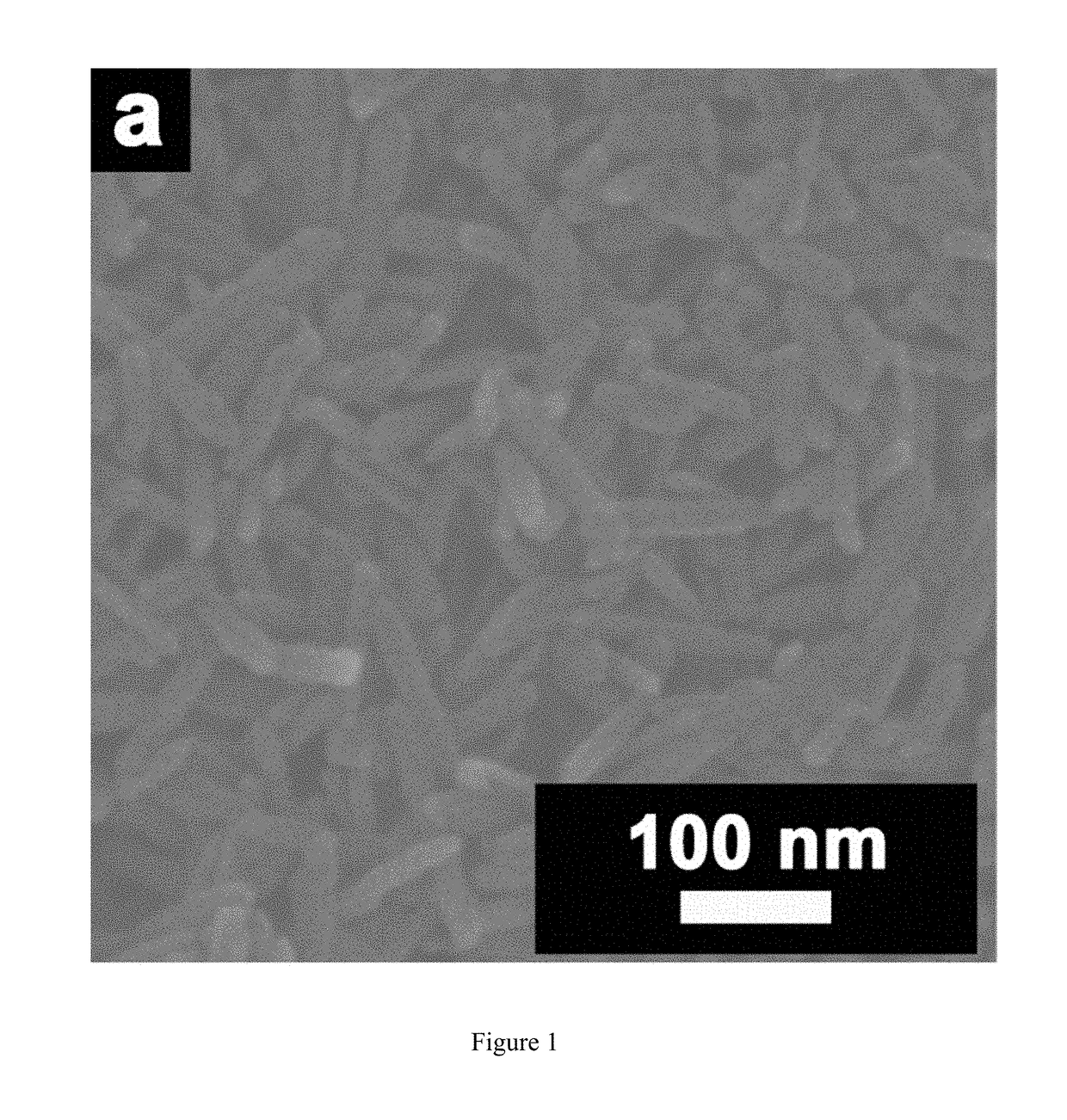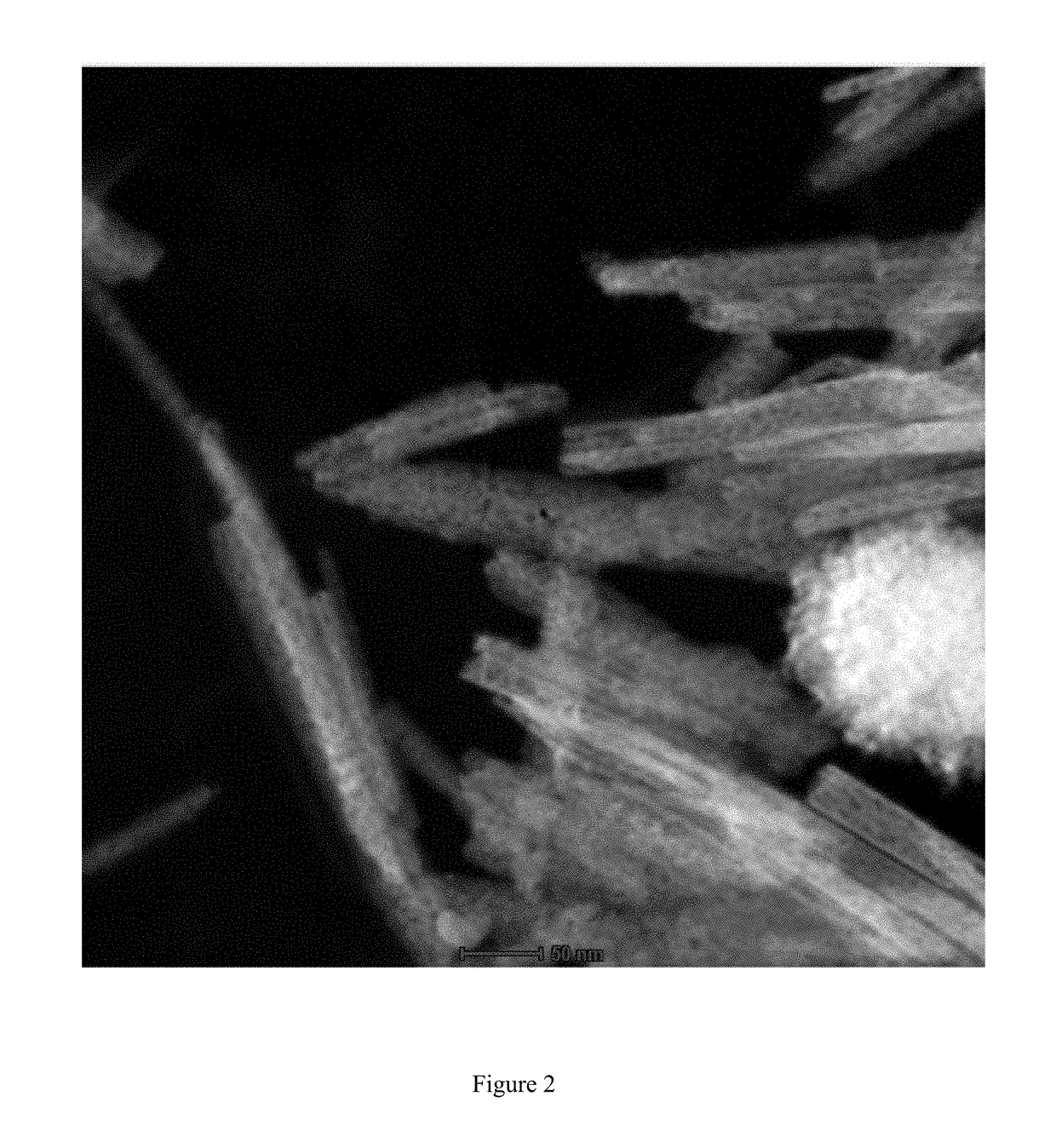Graphene/porous iron oxide nanorod composite and manufacturing method thereof
a technology nanorods, applied in the field of material chemistry, can solve the problems of limiting the use of porous iron oxide nanorods in a wide range of applications, hindering the practical application of lithium batteries, etc., and achieves the effects of enhancing the discharge capacity of iron oxide materials, good conductivity, and large specific surface area
- Summary
- Abstract
- Description
- Claims
- Application Information
AI Technical Summary
Benefits of technology
Problems solved by technology
Method used
Image
Examples
embodiment 1
[0030]A method for preparing a graphene / porous iron oxide nanorod composite, comprises the following steps:
[0031](1) 0.05 g graphene oxide was mixed with 16 mL of fibroin solution of 5.06 wt %, pH was adjusted to 10, and 0.2 mL hydrazine hydrate was added to induce reduction, and a graphene-fibroin nanofiber composite was obtained;
[0032](2) 2.15 g FeCl3.6H2O was added into the graphene-fibroin nanofiber composite, and stirring was continuously until complete dissolution to get a mixture;
[0033](3) the mixture was poured into a reactor and reaction was carried out at 160° C. for 20 h;
[0034](4) after completion of the reaction, the resulting mixture was naturally cooled to room temperature, and the product was centrifuged, washed, and finally dried in vacuum to obtain a solid powder; and
[0035](5) the resultant solid powder was calcinated in a vacuum tubular furnace in an argon atmosphere at 400° C. for 5 h, and then was naturally cooled to room temperature to get the nanorod composite....
embodiment 2
[0037]A method for preparing a graphene / porous iron oxide nanorod composite, comprises the following steps:
[0038](1) 0.05 g graphene oxide was mixed with 0.19 mL of fibroin solution of 5.06 wt %, pH was adjusted to 10, and 1 mL hydrazine hydrate was added to induce reduction, and a graphene-fibroin nanofiber composite was obtained;
[0039](2) 1 g FeCl3.6H2O was added into the graphene-fibroin nanofiber composite, and stirring was continuously until complete dissolution to get a mixture;
[0040](3) the mixture was poured into a reactor and reaction was carried out at 120° C. for 36 h;
[0041](4) after completion of the reaction, the resulting mixture was naturally cooled to room temperature, and the product was centrifuged, washed, and finally dried in vacuum to obtain a solid powder; and
[0042](5) the resultant solid powder was calcinated in a vacuum tubular furnace in an argon atmosphere at 320° C. for 8 h, and then was naturally cooled to room temperature to get the nanorod composite.
[00...
embodiment 3
[0044]A method for preparing a graphene / porous iron oxide nanorod composite, comprises the following steps:
[0045](1) 0.05 g graphene oxide was mixed with 10 mL of fibroin solution of 5.06 wt %, pH was adjusted to 10, and 20 uμL hydrazine hydrate was added to induce reduction, and a graphene-fibroin nanofiber composite was obtained;
[0046](2) 3 g FeCl3.6H2O was added into the graphene-fibroin nanofiber composite, and stirring was continuously until complete dissolution to get a mixture;
[0047](3) the mixture was poured into a reactor and reaction was carried out at 200° C. for 8 h;
[0048](4) after completion of the reaction, the resulting mixture was naturally cooled to room temperature, and the product was centrifuged, washed, and finally dried in vacuum to obtain a solid powder; and
[0049](5) the resultant solid powder was calcinated in a vacuum tubular furnace in an argon atmosphere at 450° C. for 3 h, and then was naturally cooled to room temperature to get the nanorod composite.
[005...
PUM
| Property | Measurement | Unit |
|---|---|---|
| temperature | aaaaa | aaaaa |
| temperature | aaaaa | aaaaa |
| temperature | aaaaa | aaaaa |
Abstract
Description
Claims
Application Information
 Login to View More
Login to View More - R&D
- Intellectual Property
- Life Sciences
- Materials
- Tech Scout
- Unparalleled Data Quality
- Higher Quality Content
- 60% Fewer Hallucinations
Browse by: Latest US Patents, China's latest patents, Technical Efficacy Thesaurus, Application Domain, Technology Topic, Popular Technical Reports.
© 2025 PatSnap. All rights reserved.Legal|Privacy policy|Modern Slavery Act Transparency Statement|Sitemap|About US| Contact US: help@patsnap.com



